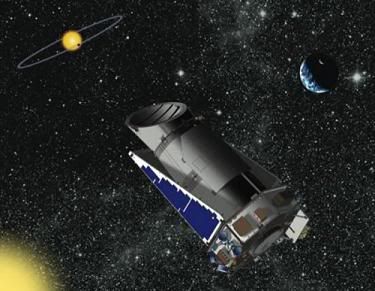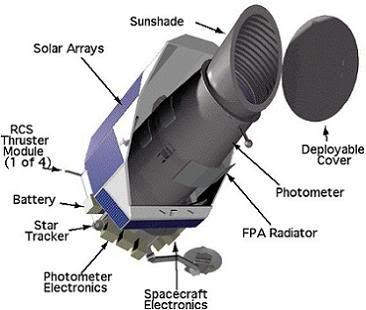Post by glactus on Jun 13, 2011 3:02:16 GMT

The Kepler spacecraft
Keppler is a NASA spacecraft equipped with a space observatory designed to discover Earth-like planets orbiting other stars. The spacecraft is named in honor of German astronomer Johannes Kepler. The spacecraft was launched on March 7, 2009, with a planned mission lifetime of at least 3.5 years.

Telescope graphics
According to NASA, the Kepler Mission is "specifically designed to survey a portion of our region of the Milky Way galaxy to discover dozens of Earth-size planets in or near the habitable zone and determine how many of the billions of stars in our galaxy have such planets."

Xopanets
Kepler uses a photometer developed by NASA to continuously monitor the brightness of over 145,000 main sequence stars in a fixed field of view. The data collected from these observations will be analyzed to detect periodic fluctuations that indicate the presence of extrasolar planets (planets outside our solar system) that are in the process of crossing the face of other stars.
The Kepler observatory is currently in active operation, with the first main results announced on 4 January 2010. As expected, the initial discoveries were all short-period planets, with longer period planets expected later. The first six weeks of data revealed five previously unknown planets, all very close to their stars. Among the notable results are one of the least dense planets yet found, and two low-mass white dwarf stars that were initially reported as being members of a new class of stellar objects.
On 2 February 2011, the Kepler team announced the results from the data of May to September 2009. They found 1235 planetary candidates circling 997 host stars, more than twice the number of currently known exoplanets. The Kepler results included 68 planetary candidates of Earth-like size and 54 planetary candidates in the habitable zone of their star. The team estimated that 5.4% of stars host Earth-size planet candidates and 17% of all stars have multiple planets.
To see Video, click on the URL below. Has sound
www.youtube.com/watch?v=1-0-HKHjsPY
Looking at kepler
Credits: These are NASA/JPL images
Text by Wilipedia
Video by NASA Television
Telescope in Avatar: Meade 16" LX 200


